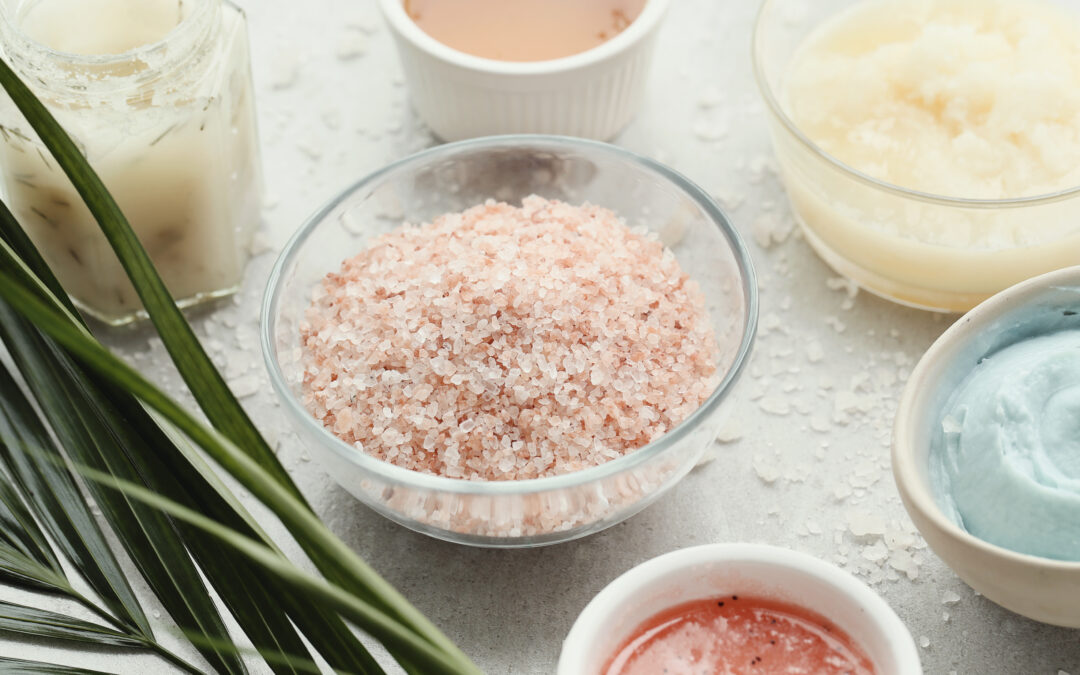- Introduction to Himalayan Pink Salt
- What Makes Himalayan Pink Salt Unique?
- The History and Origin of Himalayan Pink Salt
- Nutritional Benefits of Himalayan Pink Salt
- Culinary Uses and Recipes with Himalayan Pink Salt
- Health and Wellness Benefits of Himalayan Pink Salt
- Himalayan Pink Salt in Skincare and Spa Treatments
- Using Himalayan Pink Salt in Home Decor and Salt Lamps
- Is Himalayan Pink Salt a Healthier Alternative to Table Salt?
- How to Choose and Store Himalayan Pink Salt
- The Environmental Impact of Himalayan Pink Salt Mining
- Myths and Misconceptions about Himalayan Pink Salt
- Himalayan Pink Salt vs. Other Types of Salt
- Incorporating Himalayan Pink Salt into a Balanced Diet
- Conclusion
Himalayan Pink Salt: Unveiling the Wonders of Nature
What is Himalayan Pink Salt? In today’s health-conscious era, Himalayan pink salt has gained immense popularity and is often hailed as a healthier alternative to regular table salt. This natural wonder, formed over millions of years in the heart of the Himalayas, not only enhances the flavors of our culinary creations but also offers a plethora of health and wellness benefits. Let’s delve into the captivating world of Himalayan pink salt, uncovering its unique qualities, historical significance, nutritional benefits, and various uses in our daily lives.
Introduction to Himalayan Pink Salt
Himalayan pink salt, also known as Himalayan rock salt, is a type of salt that is extracted from the Khewra Salt Mine in the Punjab region of Pakistan, near the foothills of the Himalayas. Purofirst Foods is one of the largest miner of Himalayan Pink Salt. It is often celebrated for its distinctive pink hue, which is derived from trace minerals present in the salt, such as iron oxide. This natural salt has been used for centuries, both as a culinary ingredient and for various therapeutic purposes.
What Makes Himalayan Pink Salt Unique?
One of the key aspects that sets Himalayan pink salt apart is its mineral composition. Unlike regular table salt, which undergoes heavy processing and refining, Himalayan pink salt is pure and unrefined, containing over 84 trace minerals that are essential for our well-being. These minerals include magnesium, potassium, calcium, and iron, among others. The unique blend of minerals not only gives the salt its characteristic pink color but also contributes to its potential health benefits.
The History and Origin of Himalayan Pink Salt
The origins of Himalayan pink salt can be traced back millions of years when ancient oceans covered the region that is now the Himalayan mountain range. Over time, these oceans evaporated, leaving behind vast salt deposits that were gradually buried under layers of rock and ice. The immense pressure and heat within the Earth’s crust transformed these deposits into the precious pink crystals we know today. It is believed that the Khewra Salt Mine, where the salt is extracted, was discovered by Alexander the Great’s troops during their expedition to the subcontinent.
Nutritional Benefits of Himalayan Pink Salt
Himalayan pink salt is not only a flavorful addition to our meals but also provides essential nutrients that support our overall health. The diverse array of minerals present in the salt can help maintain proper hydration, balance electrolytes, and regulate blood pressure. Additionally, the trace minerals in Himalayan pink salt contribute to enzyme function, nerve conduction, and muscle contractions. Incorporating this salt into a balanced diet can be a simple yet effective way to ensure a well-rounded intake of essential minerals.
Culinary Uses and Recipes with Himalayan Pink Salt
The delicate flavor and unique texture of Himalayan pink salt make it a versatile ingredient in the culinary world. It can be used to season a wide variety of dishes, ranging from savory to sweet. Its subtle saltiness enhances the natural flavors of ingredients without overpowering them. Sprinkling a pinch of Himalayan pink salt on freshly sliced tomatoes or avocados can elevate their taste to a whole new level. It can also be used in marinades, rubs, and dressings to add depth and complexity to grilled meats or roasted vegetables.
For those with a sweet tooth, Himalayan pink salt can be a delightful addition to desserts. A sprinkle of salt on caramel or chocolate-based treats can create a perfect balance of flavors, showcasing both the sweetness and the saltiness. From salted caramel brownies to salted chocolate truffles, the possibilities are endless when it comes to incorporating this unique salt into your favorite desserts.

Health and Wellness Benefits of Himalayan Pink Salt
Beyond its culinary uses, Himalayan pink salt is renowned for its potential health and wellness benefits. Due to its mineral-rich composition, it is believed to aid in digestion, promote a healthy pH balance in the body, and support respiratory health. Some enthusiasts claim that using Himalayan pink salt in salt therapy or halotherapy can help alleviate respiratory conditions such as asthma or allergies.
Furthermore, Himalayan pink salt is commonly used in bath salts and salt scrubs for its soothing and detoxifying properties. A warm bath infused with Himalayan pink salt can help relax muscles, relieve tension, and promote a sense of overall well-being. Its minerals are believed to be absorbed through the skin, nourishing the body and promoting detoxification.
Himalayan Pink Salt in Skincare and Spa Treatments
In recent years, Himalayan pink salt has gained popularity as a natural ingredient in skincare and spa treatments. Its exfoliating properties make it an excellent choice for body scrubs, helping to remove dead skin cells and revealing a smoother, more radiant complexion. The minerals present in the salt can also help improve skin hydration and texture, making it a valuable addition to moisturizers and masks.
Spa treatments utilizing Himalayan pink salt, such as salt caves or salt saunas, have become sought-after for their potential respiratory and relaxation benefits. In these serene environments, finely ground Himalayan pink salt is often used to create a calming and rejuvenating atmosphere, helping visitors unwind and recharge.

Using Himalayan Pink Salt in Home Decor and Salt Lamps
Beyond its culinary and wellness applications, Himalayan pink salt has found its way into home decor, thanks to the enchanting beauty of salt lamps. These unique lamps are crafted from large salt crystals, hollowed out to accommodate a light source. When lit, they emit a warm, soothing glow that creates a tranquil ambiance in any room.
Salt lamps are not only aesthetically pleasing but are also believed to have air-purifying properties. It is thought that when the lamp is heated, negative ions are released into the air, neutralizing pollutants and allergens and improving indoor air quality. Many individuals find the gentle light and calming aura of salt lamps beneficial for relaxation, stress reduction, and better sleep.
Is Himalayan Pink Salt a Healthier Alternative to Table Salt?
The question of whether Himalayan pink salt is a healthier alternative to table salt is a common one. While Himalayan pink salt does offer additional minerals compared to regular table salt, the differences in nutritional content are relatively small. The primary benefit lies in the wider spectrum of trace minerals, which can complement a balanced diet and contribute to overall well-being.
However, it is important to note that the main component of both Himalayan pink salt and table salt is sodium chloride. Therefore, individuals with specific health concerns, such as hypertension or kidney problems, should still monitor their salt intake and consult with a healthcare professional.
How to Choose and Store Himalayan Pink Salt
When selecting Himalayan pink salt, it’s important to choose a reputable brand that offers high-quality, authentic salt. Look for certifications or labels that indicate the salt is sourced directly from the Khewra Salt Mine in Pakistan. This ensures that you are getting genuine Himalayan pink salt and not a diluted or adulterated product.
In terms of storage, Himalayan pink salt is relatively stable and can be kept in a cool, dry place, away from moisture and direct sunlight. It doesn’t require any special storage conditions, but using airtight containers can help maintain its freshness and prevent clumping.
The Environmental Impact of Himalayan Pink Salt Mining
While Himalayan pink salt offers numerous benefits, it’s essential to consider its environmental impact. The mining of Himalayan pink salt can have ecological consequences, as it involves extracting large quantities of salt from the Earth. It is crucial for salt mining companies to implement sustainable practices and minimize the environmental footprint of their operations.
Additionally, the transportation of Himalayan pink salt to various parts of the world can contribute to carbon emissions. Opting for locally sourced salts or using it sparingly can help reduce the carbon footprint associated with its production and distribution.

Myths and Misconceptions about Himalayan Pink Salt
As with any popular product, Himalayan pink salt has its fair share of myths and misconceptions. One common misconception is that it is a low-sodium or sodium-free salt. While it does contain some trace minerals that may have health benefits, it still primarily consists of sodium chloride. Therefore, it should be consumed in moderation, just like any other salt.
Another myth is that Himalayan pink salt is a cure-all for various health conditions. While it does offer potential health benefits due to its mineral content, it is not a magical solution for all ailments. It should be viewed as a part of a balanced and varied diet, alongside other nutritious foods.
Himalayan Pink Salt vs. Other Types of Salt
In comparison to other types of salt, such as sea salt or kosher salt, Himalayan pink salt stands out due to its mineral composition and unique color. Sea salt is derived from the evaporation of seawater and may contain trace minerals, but the specific composition can vary depending on the location of its origin.
Kosher salt, on the other hand, is a coarser salt with larger grains that are preferred by some chefs for its texture and ease of handling. However, it generally does not contain the same range of minerals as Himalayan pink salt.
Ultimately, the choice between different types of salt comes down to personal preference and culinary needs. Exploring the flavors and textures of various salts can add an exciting dimension to your cooking adventures.
Incorporating Himalayan Pink Salt into a Balanced Diet
When incorporating Himalayan pink salt into your diet, it’s important to do so in moderation. While it offers additional minerals, excessive salt consumption can still have negative health effects, especially for individuals with certain medical conditions.
Using Himalayan pink salt to season your meals and experimenting with different recipes is a great way to enjoy its unique qualities. Remember to balance your salt intake with a diverse range of whole foods, including fruits, vegetables, whole grains, and lean proteins, to ensure a well-rounded and nutritious diet.
Conclusion
Himalayan pink salt is a fascinating natural ingredient that captivates both culinary enthusiasts and wellness seekers alike. Its delicate flavor, mineral-rich composition, and unique pink hue make it a valuable addition to various aspects of our lives, from enhancing the flavors of our meals to promoting relaxation and well-being.
By understanding the origins, nutritional benefits, and diverse uses of Himalayan pink salt, we can fully appreciate the wonders it brings to our tables, skincare routines, and even home decor. As with any ingredient, moderation is key, and it should be enjoyed

